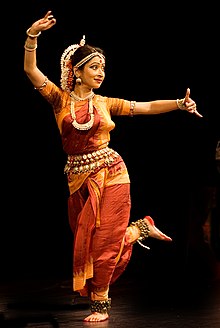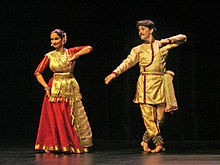Dance!
I have decided to pick different styles of dancing from five countries around the world and post a blog about each type.
Ireland

In Ireland the most famous style of dancing is traditional Irish dancing.The early history of Irish dance reveals a constant change of population through migration and invasions. Each of these people brought their preferred types of dance and music. It became popular globally in 1994 by the world-famous show "Riverdance".
social Irish dance - Social dances include céilí and set dancing. Irish céilí dances are danced in various formations of couples from 2 to 16 people. Irish set dances are danced inquadrilles, or 4 couples arranged in a square formation.
Irish performance dance - Traditionally known as stepdance, popularized by the famous "Riverdance" show.It is known for its rapid leg movements and stationary body and arms. Solo stepdances can be performed in soft shoes or hard shoes.
Today there are many opportunities to watch and enjoy Irish dancing. It is still a regular part of social functions. During the summer months, céilis are held in many Irish towns. Visitors are always welcome to join in and with on the spot, informal instruction, anyone can quickly master the first steps and soon share the Irish enthusiasm for Irish dance.
Spain
In the southern region of Spain the most common and oldest dance of Spain is Flamenco.
The roots of Flamenco come from different cultures and countries such as Morocco, Egypt, and India, but the first traces of flamenco in Spain date to 1760.
The roots of Flamenco come from different cultures and countries such as Morocco, Egypt, and India, but the first traces of flamenco in Spain date to 1760.
Flamenco is divided into two groups, the group of singers and the group of dancers. The group of singers is normally formed of men who sing and play the Spanish guitar.
The women help them by clapping their hands.
The group of dancers is usually formed of women; they wear beautiful and colorful flounce dresses due to the country's hot climate. It is said the most best thing in Flamenco dancing is how fast they can move their feet and keep in time with the fast music.

Valencia is the eastern region of Spain, located on the Mediterranean Sea. Its traditional Spanish dances include
The geography of Spain has contributed to its diversity of folk styles. Spain occupies much of the Iberian Peninsula and is surrounded by the Atlantic Ocean and the Mediterranean Sea. There are several mountain ranges in Spain that isolate parts of the country physically and culturally. Invaders over the centuries also added to the country’s diversity of dancing and musical styles
 Fandango dancing.
Fandango dancing.

Valencia is the eastern region of Spain, located on the Mediterranean Sea. Its traditional Spanish dances include
| • | fandango a lively couple’s dance , with guitar and castanets accompanying |
| • | Jota (HO-tah) a quick folk dance |
| • | El u i el dos (el oo ee el dohs) which means "the one and the two." This dance is performed in two concentric circles. |
The geography of Spain has contributed to its diversity of folk styles. Spain occupies much of the Iberian Peninsula and is surrounded by the Atlantic Ocean and the Mediterranean Sea. There are several mountain ranges in Spain that isolate parts of the country physically and culturally. Invaders over the centuries also added to the country’s diversity of dancing and musical styles
 Fandango dancing.
Fandango dancing.
Amercia
There is great variety in dance in the USA It is the home of the hip hop dance and its derivative Rock and Roll, and modern square dance and one of the major centers for modern dance. There is a variety of social or performance dance forms with also a range of traditions of Native American dances.
Due to America being a wealthy first world country with a large population, American style dancing such as hip hop and modern dancing has been popularized and developed in many different countries around the world by celebrities and the media.
Due to America being a wealthy first world country with a large population, American style dancing such as hip hop and modern dancing has been popularized and developed in many different countries around the world by celebrities and the media.
Hip hop dancing
Hip hop developed from several cultures, including jazz, rock, tap and American cultures. It is a very energetic form of dancing. It is unique in that it allows its dancers to perform with freedom of movement, adding in their own personalities.People usually do this style of dancing to hip hop music.

swing dancing
Swing dance is a style of dancing that developed with jazz music of that time in New York in the 1930's. It is a popular partner dance that is still danced today.
Modern/Contemporary dancing
American modern dance developed in the early 20th century alongside American music. Modern dancers use dancing to express their innermost emotions, often to get closer to their inner-selves. Before attempting to choreograph a routine, the modern dancer decides which emotions to try to convey to the audience. Many modern dancers choose a subject near and dear to their hearts, such as a lost love or a personal failure. The dancer will choose music that relates to the story they wish to tell, or choose to use no music at all, and then choose a costume to reflect their chosen emotions. Martha Graham is Americas most important pioneers of American modern dance.She developed her very own 'language of movement' for dancers to express emotions through sharp jagged moves as apposed to long, fluid steps.
 1930's swing dance
1930's swing dance  modern dance
modern dance
India
Indian dances and music were not only seen as ways to celebrate, but also as offerings of worship and thanks giving to the Gods and Goddesses. All the dance forms were structured around the nine 'Rasa' or emotions, Hasya (happiness), Shoka (sorrow), Krodha (anger), Karuna (compassion), Bhibatsa (disgust), Adhbhuta (wonder), Bhaya (fear), Viram (courage) & Shanta (serenity). There are a lot of cultural dances in India some of the classical dances include...
Kathac : danced by both men and women to classical music. A Kathak dancer is not required strictly to obey to fixed steps and stages in a certain order. They can change the sequence of stages to suit his or her aptitude and style of dancing in order to tell a story.
Bharata Natyam: This is the most popular Indian dance and is the purest form of classical dance from the south state of Tamil Nadu. Its inspirations come from the sculptures of the ancient temple of Chidambaram and is practiced mainly by women.
Kathakali: A Striking feature of Kathakali is the use of elaborate make-up and colourful costumes. This is to emphasize that the characters are superbeings from another world.
Odissi: The Odissi dancers use their head, chest and torso in soft flowing movements to express specific moods and emotions. The history of Odissi dates back to somewhere between the 8th and the 11th century, when the kings took great pride in excelling in the arts of dance and music. Odissi dancer costume is a silk saree draped in a practical and comfortable style. Wears on the head ornament called the "Mathami", on ears "Kapa", on wrists "Kankana"
Today Odissi is a well established classical dance form of India.

 Odissi dancer Kathac dancers Kathakali dancerSome traditions of the Indian classical dance are geographically spread and practiced in the whole Indian subcontinent, including Pakistan and Bangladesh, with which India shares several other cultural traits. |